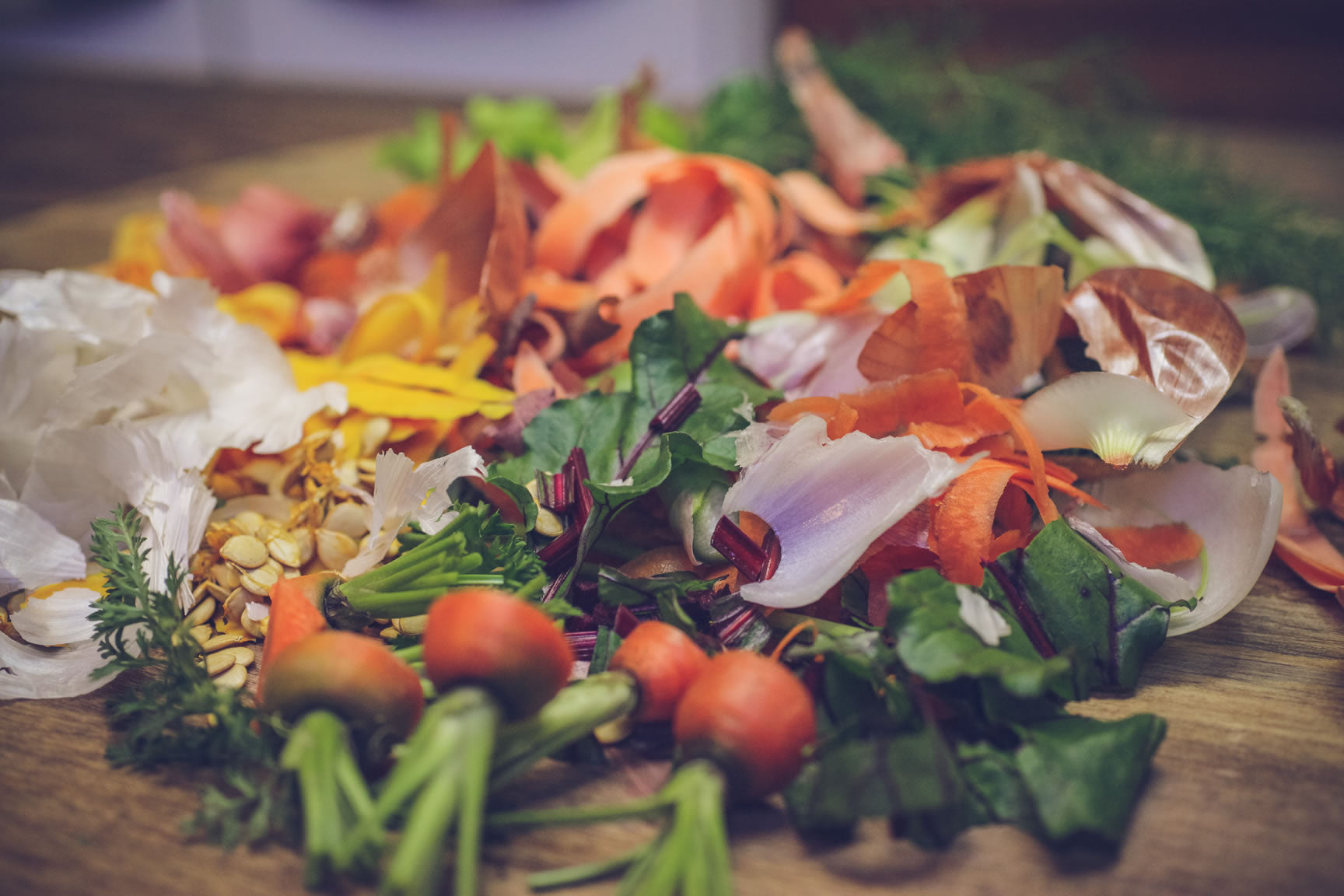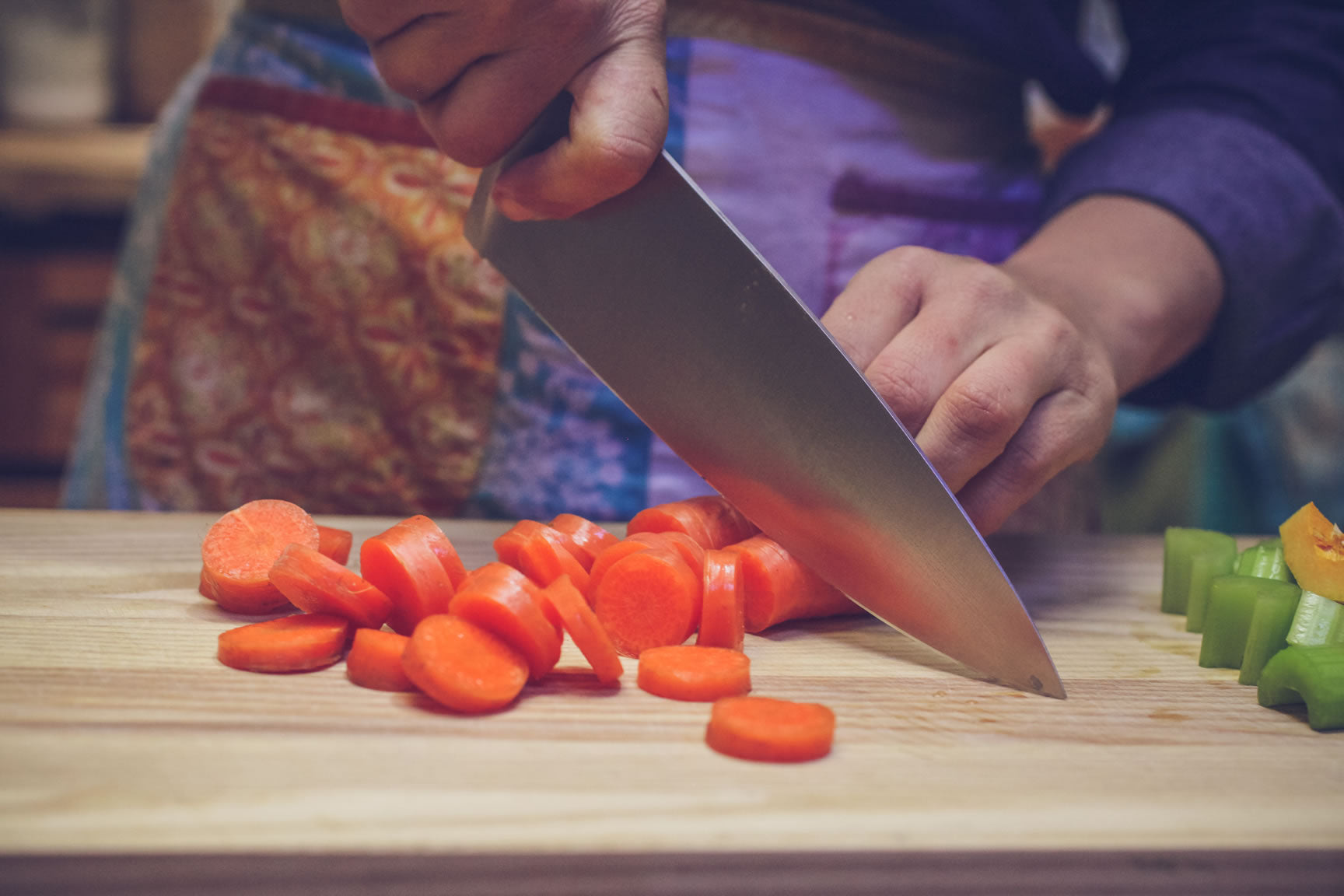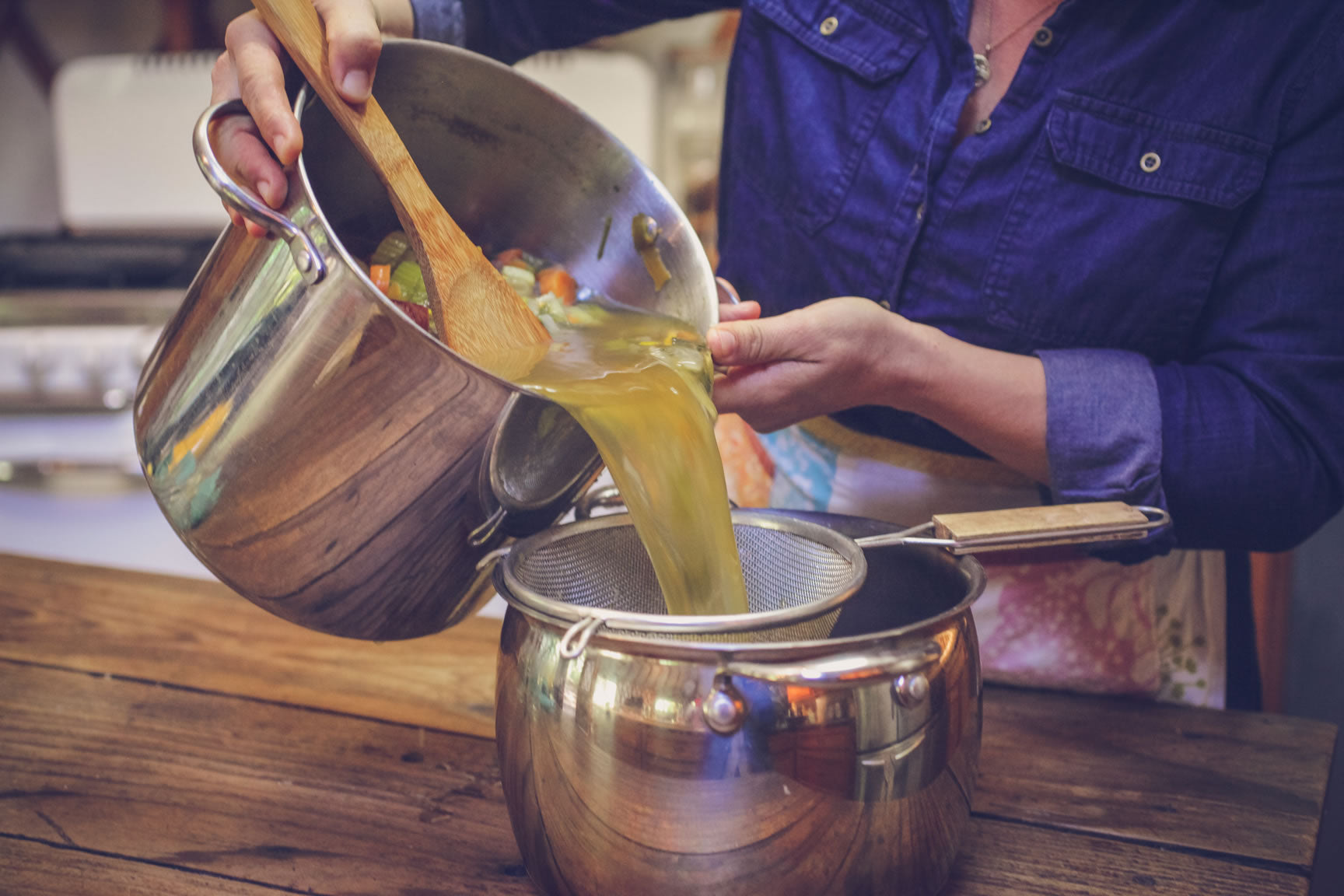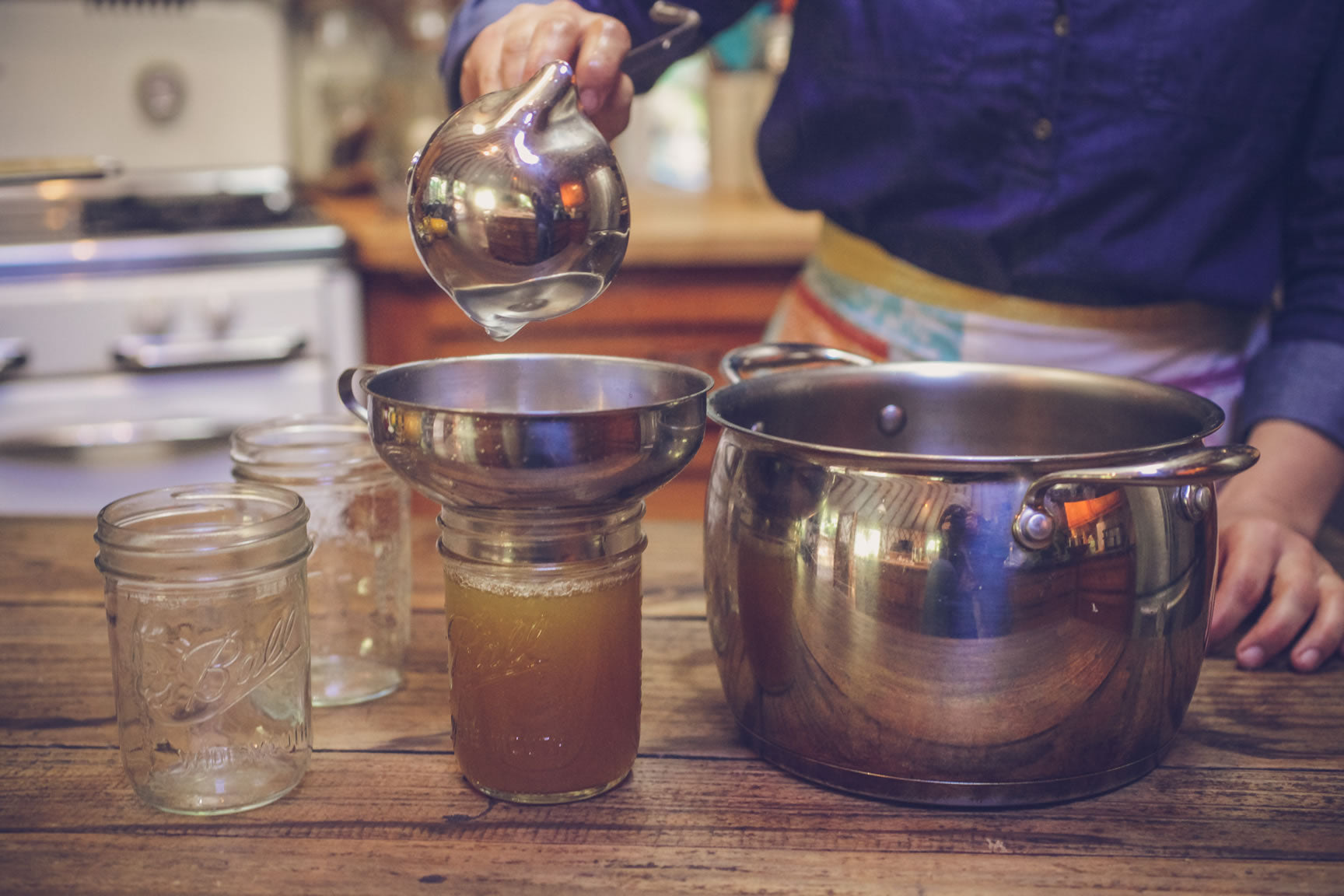- Continue Shopping
- Your Cart is Empty
Vegetable Stocks for Ramen and Beyond

What You'll Need
Equipment
- measuring cups and spoons
- Ball Elite 1/2 pint Jars or pint and a half mason jar for freezing
- good kitchen knife and clean cutting surface
- large stock pot
- strainer
- half gallon mason jarfor canning or short term storage
Base Stock Ingredients
- 1 large or 2 medium onions, diced
- 3 lbs light or sweet tasting vegetables: Carrots, celery, yams, sweet potatoes, summer squash, winter squash, bell peppers, green beans, asparagus, etc, chopped into 1" pieces
- 3 quarts or enough water to cover vegetables
- 1-2 bay leaves
- 5 sprigs parsley with stems
Flavoring Options:
- Handful leafy greens: chard, kale, beet tops, carrot tops, etc.
- A few cloves garlic, diced tomatoes or 1/4 cup tomato paste, roasted mushrooms with stems, 10 black peppercorns
- Herbs or spices specific to the flavor profile of the recipe the stock will be used for.
A light vegetable stock is made using raw vegetables simmered in water. It is delicately flavored and is an excellent base for refreshing dishes like cold soup, or grain-based salad. It can be used in place of water in savory baking to enhance deliciousness. Light vegetable stock works very well as a poaching medium for gentle flavor enhancement.
Classic vegetable stock uses mostly raw vegetables, but the onions are sautéed first for 10-15 minutes over med heat to release more flavor. The carrots and celery can also be lightly sautéed. This stock can be used in any recipe and is the most versatile.
Roasted vegetable stock is made by pre-roasting most of the vegetables for 15-25 minutes at 375°F, after tossing with olive oil, before simmering in water. You do not roast any leafy veg or fresh herbs. It is the most full flavored of the vegetable stocks. It adds complexity to any vegetarian dish and is best for full flavor, hearty recipes like bean and grain soups, or sauces where the robust flavor will not overwhelm the key ingredients of the dish.
Mushroom stock is full of nutrients and brings an earthy, robust flavor to dishes. It imparts the most umami flavor of the non-animal foods. Mushroom stock is delicious as broth or as a base for almost any dish or cooking method, where a stronger flavor is desired. For best flavor sauté or roast mushrooms including stems, and use no leafy greens while simmering.
When you make stock, you are capturing the essence of the ingredients. As such, it can only be as good as the ingredients you start with, so choose fresh, lively vegetables, and avoid the temptation to use aged or past due ingredients- especially mushrooms! Old, funky vegetables will always impart a dishwater-esque flavor to the stock, and into any recipe the stock is used for. The skins and tops of vegetables are a hidden treasure trove of flavor, however, and it is well worth saving up your fresh vegetable tops, peels & scraps throughout the week, keeping them in the freezer in a sealed container until you have enough for a batch of broth.
Most vegetable stocks are made from 25-50% onions, carrots, and celery as the base, known as mirepoix, with additional vegetables like squash, yams, bell peppers, etc, along with a few herbs making up the rest. Depending on what the stock will be used for, garlic, tomatoes or mushrooms might be used to enhance the flavor, but these flavors are hard to control and can always be added later. Stronger flavored vegetables like Brussels sprouts, cabbage, turnips, beets etc. can be used, but they will greatly affect the flavor of the stock. Use them with the intention if you want your stock to taste specifically like that vegetable, and add them to the simmering water only for the last 15 minutes of cooking.
Any of these stocks are a good base for ramen, but some may need more flavor adjustment than others. A rich, roasted mushroom stock, like our Kombu Mushroom Broth, might need little enhancement, but a light, unroasted stock will benefit from the addition of soy sauce, miso, sriracha, or other intense ingredients that are a traditional counterpoint to the noodles, vegetables, and thinly sliced meats typical of ramen bowls. Adjust seasoning to taste after the broth has cooked, so that salt is not concentrated as liquid is lost through long cooking.
Makes approximately 1/2 gallon
Time: about 1 hour
Directions
Wash and prepare all ingredients as directed.

If desired: sauté onions, or roast onions and vegetables for more depth of flavor
Place vegetables into a large stock pot and cover with cold water (hold back any larger leafy greens like collards or kale)
Place over medium heat until contents come to a simmer. Stir, and continue simmering until carrots are softened. You'll know it's done if you taste a cooked carrot and find it bland; all the carrot flavor has been released into the broth.
Add leafy greens or any additional vegetables, herbs or spices, if using, and simmer for 15 more minutes. Turn off heat and allow to cool 10 minutes.  Strain stock through a fine colander into another bowl or directly into mason jars. Discard the cooked vegetables in the compost, or feed them to chickens.
Strain stock through a fine colander into another bowl or directly into mason jars. Discard the cooked vegetables in the compost, or feed them to chickens.  Use straight-sided jars like the wide-mouth pint or pint & a half jars for freezing.
Use straight-sided jars like the wide-mouth pint or pint & a half jars for freezing.  Allow stock to cool to room temperature before putting them in the fridge. Jars can be cooled quickly after putting lids on by placing them in a sink full of cool (not cold), water for 15-20 minutes.
Allow stock to cool to room temperature before putting them in the fridge. Jars can be cooled quickly after putting lids on by placing them in a sink full of cool (not cold), water for 15-20 minutes.
 Do not leave cooling jars out of the fridge for more than 2 hours.
Do not leave cooling jars out of the fridge for more than 2 hours.
Use refrigerated vegetable stock within 5-7 days or freeze for later use.
Over to You
It’s part of our mission here at Mountain Feed to help you make delicious, sustainable, homemade food more often. Stop by and say hello on Facebook, Twitter, Instagram or Pinterest. Or, as always, you can do it the old-fashioned way and come by the store to speak with one of our in-house experts.
